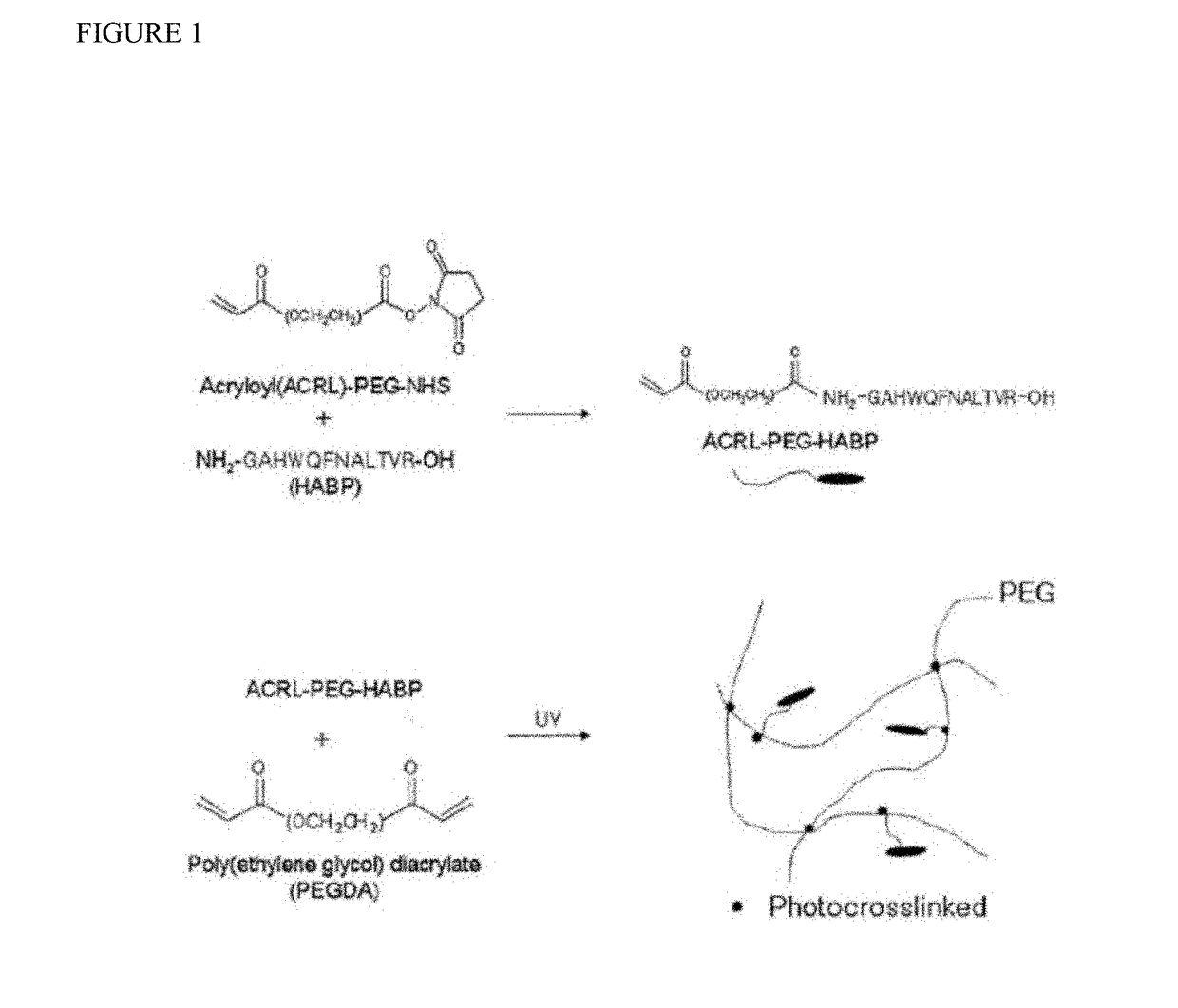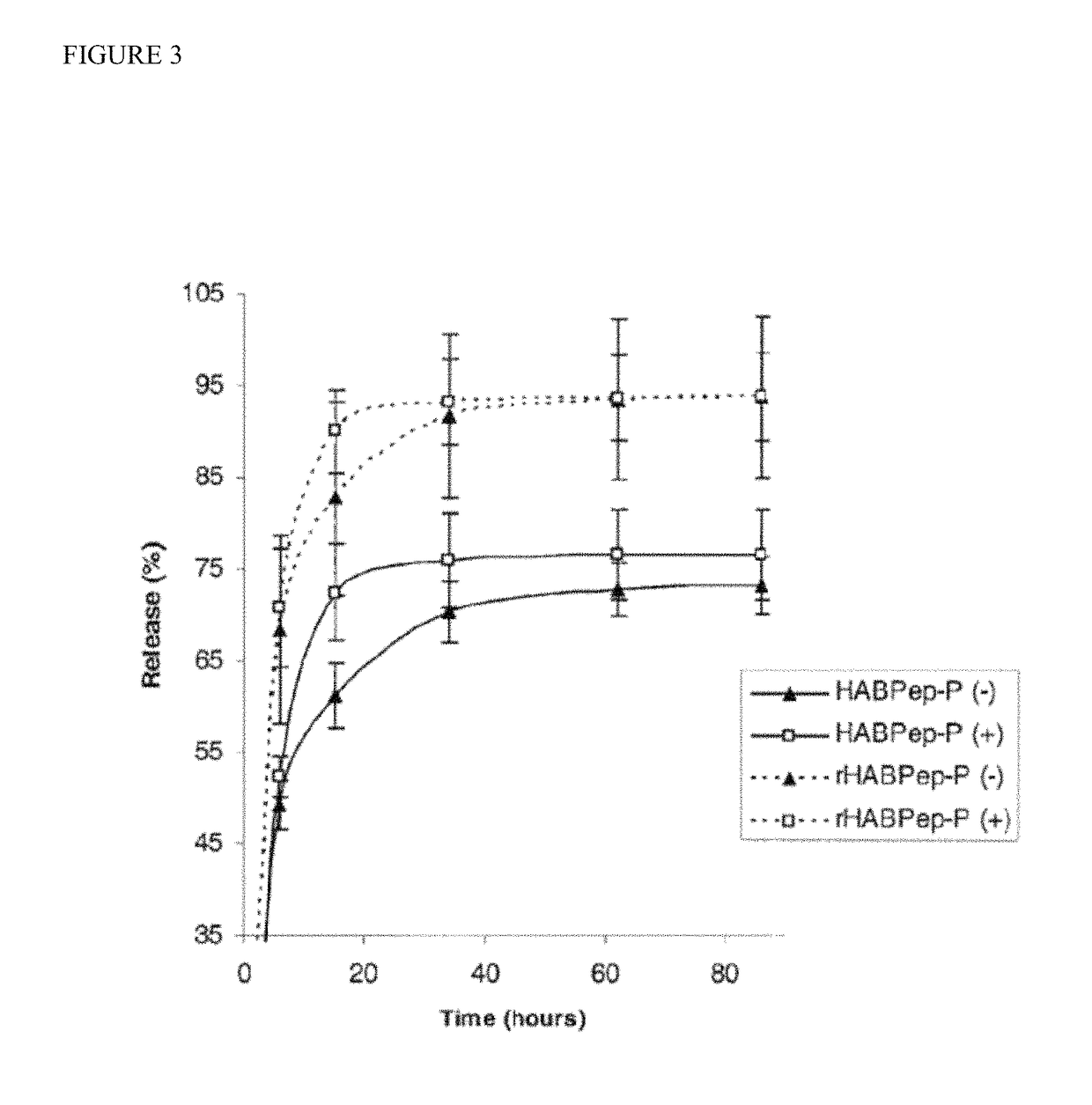Biomaterials comprising hyaluronic acid binding peptides and bifunctional biopolymer molecules for hyaluronic acid retention and tissue engineering applications
a biopolymer and hyaluronic acid technology, applied in the direction of macromolecular non-active ingredients, aerosol delivery, prosthesis, etc., can solve the problems of unanticipated significant changes in biological activity, poor endogenous repair capacity of cartilage, and largely ineffective therapies at producing robust, healthy repair tissue. , to achieve the effect of improving joint lubrication, enhancing the boundary lubrication effect of free ha, and improving chondrogenesis of bon
- Summary
- Abstract
- Description
- Claims
- Application Information
AI Technical Summary
Benefits of technology
Problems solved by technology
Method used
Image
Examples
example 1
[0177]HA-encapsulated PEODA hydrogels of the present invention (100 μL) were incubated in 1 ml PBS or hyaluronase solution with or without 2% HA-binding peptide at 37° C. while placed on a shaker. (HABPep-P: HA-binding peptide, rHABPep-P: randomly sequenced peptide with the same composition as the HA-binding peptides). Solutions were replaced and collected at various time points, and carbazole assay was employed to measure the release of HA degradation to PBS solution by detecting uronic acid. (FIG. 3).
example 2
[0178]FIG. 4 shows the retention of HA by crosslinking HABPep results in increased DNA and GAG in hydrogel constructs after three-week in vitro culture. Moreover, simple addition of soluble HABPeptide in a construct increases GAG and collagen contents. (C-HABPep: crosslinked HABPeptide, C-sHABPep: crosslinked randomly sequenced HABPeptide, S-HABPep: soluble HABPeptide, S-sHABPep: soluble randomly sequenced HABPep).
example 3
[0179]FIG. 5 shows that after three-weeks of in vivo culture, retention of HA by crosslinking HABpep (CHABPep: crosslinked HABP) still results in increased DNA and GAG in constructs.
PUM
| Property | Measurement | Unit |
|---|---|---|
| temperatures | aaaaa | aaaaa |
| pH | aaaaa | aaaaa |
| concentrations | aaaaa | aaaaa |
Abstract
Description
Claims
Application Information
 Login to View More
Login to View More - R&D
- Intellectual Property
- Life Sciences
- Materials
- Tech Scout
- Unparalleled Data Quality
- Higher Quality Content
- 60% Fewer Hallucinations
Browse by: Latest US Patents, China's latest patents, Technical Efficacy Thesaurus, Application Domain, Technology Topic, Popular Technical Reports.
© 2025 PatSnap. All rights reserved.Legal|Privacy policy|Modern Slavery Act Transparency Statement|Sitemap|About US| Contact US: help@patsnap.com



